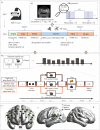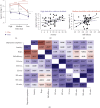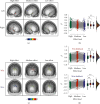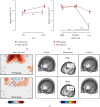Enhancing Agency in Individuals with Depressive Symptoms: The Roles of Effort, Outcome Valence, and Its Underlying Cognitive Mechanisms and Neural Basis
- PMID: 40226720
- PMCID: PMC11919012
- DOI: 10.1155/2024/3135532
Enhancing Agency in Individuals with Depressive Symptoms: The Roles of Effort, Outcome Valence, and Its Underlying Cognitive Mechanisms and Neural Basis
Abstract
Background: Agency, a sense of control over one's actions and outcomes, is crucial for recovery from depressive symptoms. However, the mechanisms that enhance agency in individuals with depressive symptoms remain poorly understood. This study endeavors to elucidate these fundamental processes.
Materials and methods: We recruited 52 participants exhibiting depressive symptoms to participate in a novel Judgment of Agency (JoA) task. This task was structured with a 3 (effort: high load, medium load, low load) × 2 (outcome: win, miss) within-subject design to assess the impact of effort and outcome valence on agency. Throughout the task, we utilized functional near-infrared spectroscopy (fNIRS) to explore the neural mechanisms underlying agency. Furthermore, we conducted a randomized, sham-controlled, pre-post-test trial involving intermittent theta-burst stimulation (iTBS) targeted at the left dorsolateral prefrontal cortex (DLPFC) to investigate its potential to enhance agency. Participants were randomly allocated to either an active iTBS group or a sham group, with each receiving a single session of stimulation (600 pulses). The JoA task was conducted both before and after the stimulation.
Results: Effort significantly influenced agency in individuals with depressive symptoms, with this effect being moderated by the outcomes' valences. Agency was positively correlated with self-efficacy (r = 0.28, P < 0.05) when goals were achieved with effort, and with anxiety severity (r = 0.29, P < 0.05) when goals were not achieved. Additionally, it was associated with the activation of several frontal brain regions (all P values < 0.01), including the left DLPFC, right premotor and supplementary motor areas, and the left inferior frontal gyrus (IFG). Application of iTBS over the left DLPFC significantly enhanced self-attributed agency, particularly when the outcomes were achieved under conditions of low-load effort.
Conclusions: Our study highlights the critical role of effort in enhancing agency for individuals with depressive symptoms, with iTBS applied to the left DLPFC showing potential to enhance agency postgoal achievement. Moreover, the activation of the left IFG and the presence of anxiety are associated with maladaptive self-attributed agency, offering potential targets for therapeutic intervention.
Copyright © 2024 Jingyuan Lin et al.
Conflict of interest statement
The authors declare no conflicts of interest regarding the publication of this article.
Figures






Similar articles
-
Modulation of dorsolateral prefrontal cortex functional connectivity after intermittent theta-burst stimulation in depression: Combining findings from fNIRS and fMRI.Neuroimage Clin. 2022;34:103028. doi: 10.1016/j.nicl.2022.103028. Epub 2022 May 2. Neuroimage Clin. 2022. PMID: 35537216 Free PMC article. Clinical Trial.
-
The cerebral and cognitive changes after intermittent theta burst stimulation (iTBS) treatment for depression: study protocol for a randomized double-blind sham-controlled trial.Trials. 2024 Nov 11;25(1):752. doi: 10.1186/s13063-024-08606-8. Trials. 2024. PMID: 39529199 Free PMC article.
-
Investigating the hemodynamic response to iTBS of the left DLPFC: A concurrent iTBS/fNIRS study.Brain Stimul. 2025 Mar-Apr;18(2):235-245. doi: 10.1016/j.brs.2025.02.008. Epub 2025 Feb 14. Brain Stimul. 2025. PMID: 39955026
-
Different activation in dorsolateral prefrontal cortex between anxious depression and non-anxious depression during an autobiographical memory task: A fNIRS study.J Affect Disord. 2024 Oct 1;362:585-594. doi: 10.1016/j.jad.2024.07.031. Epub 2024 Jul 15. J Affect Disord. 2024. PMID: 39019227
-
Non-inferiority of intermittent theta burst stimulation over the left V1 vs. classical target for depression: A randomized, double-blind trial.J Affect Disord. 2023 Dec 15;343:59-70. doi: 10.1016/j.jad.2023.09.024. Epub 2023 Sep 24. J Affect Disord. 2023. PMID: 37751801 Clinical Trial.
References
Publication types
MeSH terms
LinkOut - more resources
Full Text Sources
Medical
Miscellaneous

